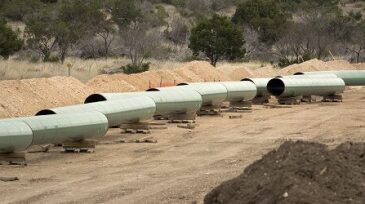Rystad Energy
-
Thousands of horizontal wells that had been drilled but uncompleted (DUCs) offered a way to maintain production without the cost of drilling more wells, but that resource is finally running low.
-
A new report finds that, as many nations lost billions in recoverable reserves last year, the smaller footprint may put the industry on course to align with the world's climate targets.
-
As European majors push hard and fast to decarbonize energy and move into new and renewable sources, US majors are focusing on cleaner, more efficient hydrocarbons. Which approach and which companies will gain the upper hand?
-
Oslo-based consultancy Rystad Energy sees the potential for robots and automation to replace up to 400,000 roles in North America, Europe, and Russia by 2030. The timeline is not guaranteed, though, and will move at a speed set by human decision making.
-
The two-well stimulation approach is delivering big savings to first adopters. A new report from Rystad highlights how the development is taking shape.
-
The good news for next year is no one is predicting a repeat of what happened this year. The bad news is the outlooks offers little incentive to find any more oil.
-
In an updated projection, Rystad said that a breakeven of only $50/bbl is needed to produce 100 million BOPD in 2025, reflecting the reduction in oil-production costs.
-
Rystad Energy compared the decommissioning costs based on two similar steel platforms, one in each region, using its cost-estimating tool.
-
Enterprise Products Partners publicly acknowledged the deep slump in pipeline demand out of the Permian Basin by canceling a project at a time when most producers have been quietly postponing US projects.
-
Several E&P and OFS companies have already filed for Chapter 11, but unless prices strengthen the total number of filings could be as high as 190 by 2022.










